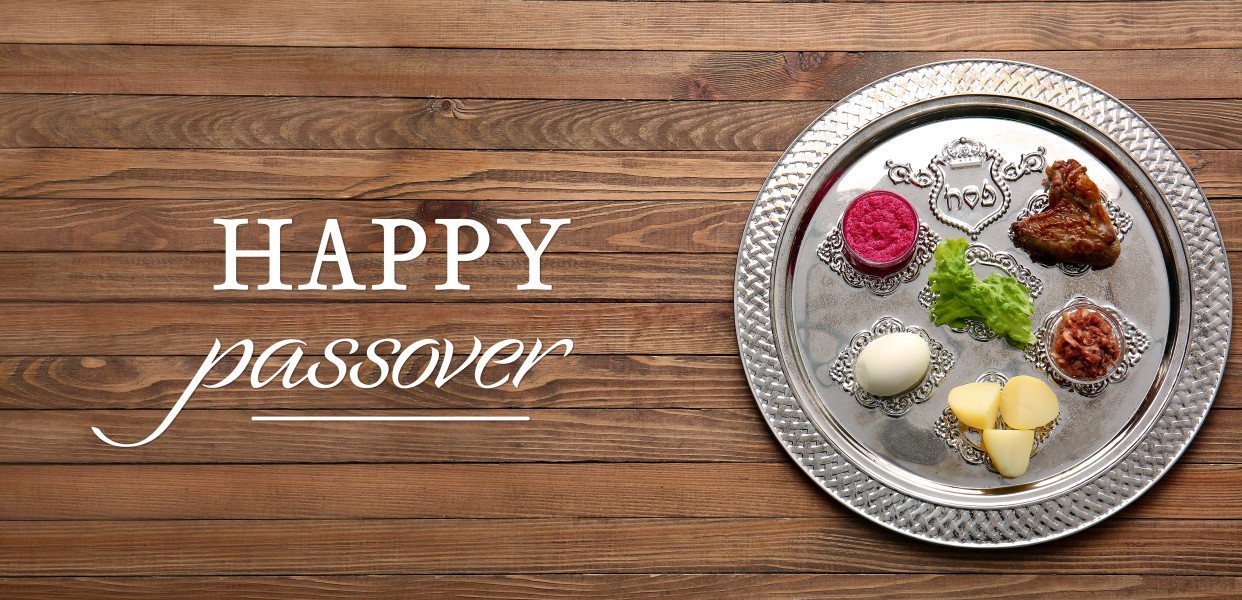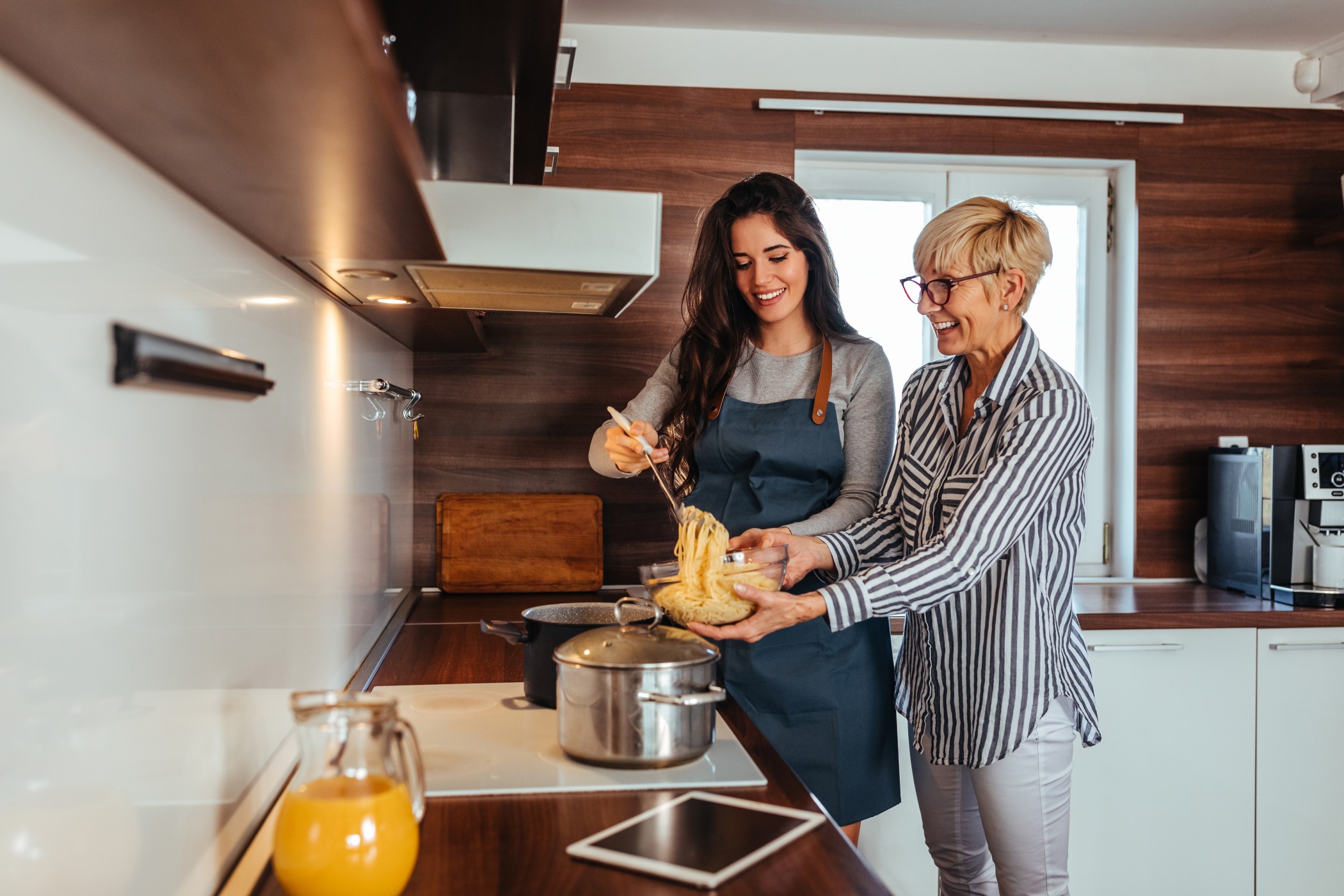
Sweeten Up Your 4th of July With These Patriotic Desserts
June 30, 2023
Posted: April 15, 2022 8:54 am





Known in Hebrew as ke’arah, the Seder plate continues to be the centerpiece during Passover´s initial start. No matter what is used for the Seder plate, the plate needs to include the traditional food items based on the Seder. The food items involved include a vegetable known as karpas, herbs, an egg, matzah, and a zeroa or shankbone.
In order to avoid the ton of questions regarding halacha and the Seder plate, you should have all of the foods prepared ahead of time.
There is also a lot of thought that goes into the food prepared for Passover. The Seder food items are considered symbolic and has plenty of meaning behind them. Below, we have each food items description, why the food item is utilized, the preparation of the item, and the role it plays in the dish.
The matzot is situated as three pieces covered with one on top of the other on a napkin or plate. You may also have them separated using napkins or plates that are interleaved.
When you use three matzots, one can be broken and the other two can still be used for your Hamotzi blessing. The symbolic matzot represents Israelites, Priests, and Levites and celebrate the three types of flour used by Sarah to produce matzah.
Ideally, it is best to have shmurah matzah that is handmade as it is moisture-free from the time it is harvested.
Using a plate or a cloth above your matzot, you will position the shankbone (Zeroa), egg (Beitzah), and the bitter herbs (Maror/Chazaret).
The shankbone is roasted meat and symbolizes the sacrificial lamb used prior to the Egyptian exodus and prior to Passover.
Sometimes a lamb´s forearm is used as the shankbone. Due to the need of preventing any type of confusion of leaving out the Holy Temple, many prefer to use an alternative to the real lamb meat. Therefore, s loty of times roasted chicken neck will take place of the lamb.
Preparing the roasted neck requires it to be cooked on all sides using an open fire. When it is done cooking, the meat is removed.
The role that zeroa plays is a continuous one where it does not get eaten during your seder. In fact, once the meal is completed, the zeroa is saved in the refrigerator and then used for the next day for another plate.
The beitzah (egg) is hard-boiled and plays the role of the offering prior to the holiday and when the Holy Temple was visited. The use of this meat made up the majority of the Seder meal. In Aramaic, “Egg” is pronounced as bei’ah. It is believed that that the word is close to the meaning of “desire”, which would explain how God had a desire to redeem his people from bondage.
Preparing the beitzah requires the boiling of an egg for each separate plate as well as any extras that may be needed. The role that the egg plays involves having an egg placed on plates. Once the meal begins, an egg is removed and used as part of the Seder meal.
Traditionally, the saltwater is eaten along with the eggs.
With the bitter herbs, they are meant to resemble how bitter the Egyptian slavery was. Using fresh horseradish and romain lettuce are commonly used. Although the romain leaves have no bitterness, the stem itself will become bitter if it is not removed from the ground. This bitterness is what the slaves felt. When the work began, it was considered a sensible approach by the Pharoah but as work progressed, it became forced labor with cruel intentions.
To prepare the horseradish herb, peel the roots, rinse, and allow to fully dry. You then grate the horseradish with a grater prior to the holiday arriving. Expect as lot of tears to be shed while the horseradish is being grated. If needed, you can have a cloth covering your nose and mouth to prevent the strong fumes from affecting you. Make sure that the horseradish is plain with nothing added.
The next bitter herb is the romain lettuce, which takes the place of the hazeret. A lot of times the same bitter herb can be used for both Seder components. If this is the case, then a hazeret will not be used for the meal.
When using romain lettuce, you need to be aware of the sandy texture that accompanies it. This is why it is important to wash it thoroughly and remove any insects that are present. However, make sure that it is not soaking over night. If the lettuce does become too moist, you can pat it dry so that the matzah does not get wet.
The amount of romain lettuce you have will determine how much time you will need to prepare it. In all fairness, the lettuce should be ready prior to your lighting of your candles. Make sure that you have enough lettuce to last for two nights and keep it refrigerated.
Although many favor the romain lettuce, there are also many who like to combine both into the meal. You can have a few leaves set on the plate with a topping of horseradish.
Due to the herbs being added two times, it will be placed twice on the plate. With the first herb pile, it is centered in the Seder plate. The second herb of lettuce is then placed underneath.
Using the herbs is done once the Haggadah has been recited and handwashing is completed. The herbs will be eaten together with the matzah and then the maror will be eaten. You then eat a matzah sandwich with the maror.
The traditional paste is a mix of wine, pears, apples, and nuts and is meant to appear as the brick mortar used to build for the Pharoah.
To prepare the paste, make sure that the nuts have no shells and the nuts, pears and apples are finely chopped. Combine all three and add a little bit of wine.
The paste is used as a relish and the maror gets dipped into prior to eating.
When the Seder plate vegetable is used, it is mainly comprised of an onion or potato. The parsley (karpas) is representative of the work that the jews conducted while enslaved. With the karpas letters, they can spell out perech along with the samech letter. In Hebrew, backbreaking work is defined by Perech. Samech is the number 60 and is representative of 60 scores that equal 600,000. This number is thought to be the amount of young jewish slaves.
As you prepare the vegetable, it will need to be boiled and then a piece is sliced off and arranged on your plate. You then set a bowl of saltwater next to it.
As part of the Seder plate, the family will wash their hands and will forego the blessing. They will then have a small amount of vegetable and have it dipped in the saltwater. The vegetable is then eaten after reciting a blessing. Ensure that only a half ounce of the vegetable is eaten.
More than one tradition involves the arrangement of the Seder plate items. Normally, the center of the plate has the maror. You then place your hazeret at 6 and then move clockwise and place the karpas at 7, the beitzah at 11, the z’roa at 1, and the haroset at 5.
Besides the items on the traditional Seder plate, you should also consider the Seder table itself. On the table, it needs to have 3 matzahs in a cloth along with vinegar or salt water for dipping.
Although there are some plates having extra compartments for the matzah or salt water, they are not normally together on the plate. The items will be near each other but noton the Seder plate itself.
Contemporary Jews will add other items to their Seder plate to symbolize various struggles in modern society. Today, an orange will be used a lot to signify the role of women in the Jewish way of life. The orange is also a symbol of how fruitful the women have become within Jewish communities.

June 13, 2023

May 10, 2023